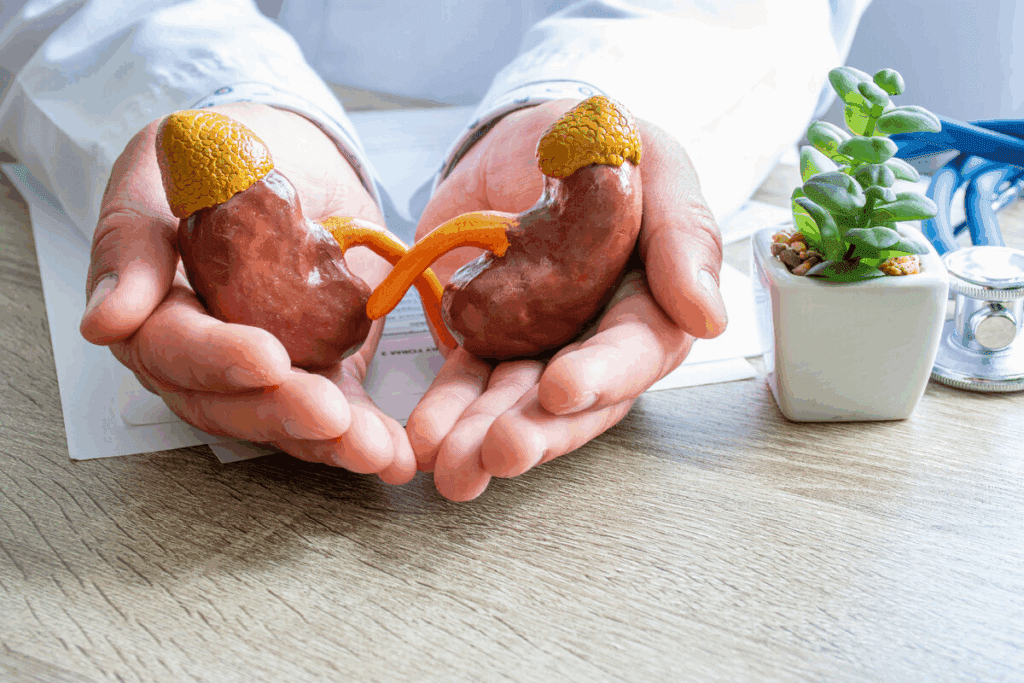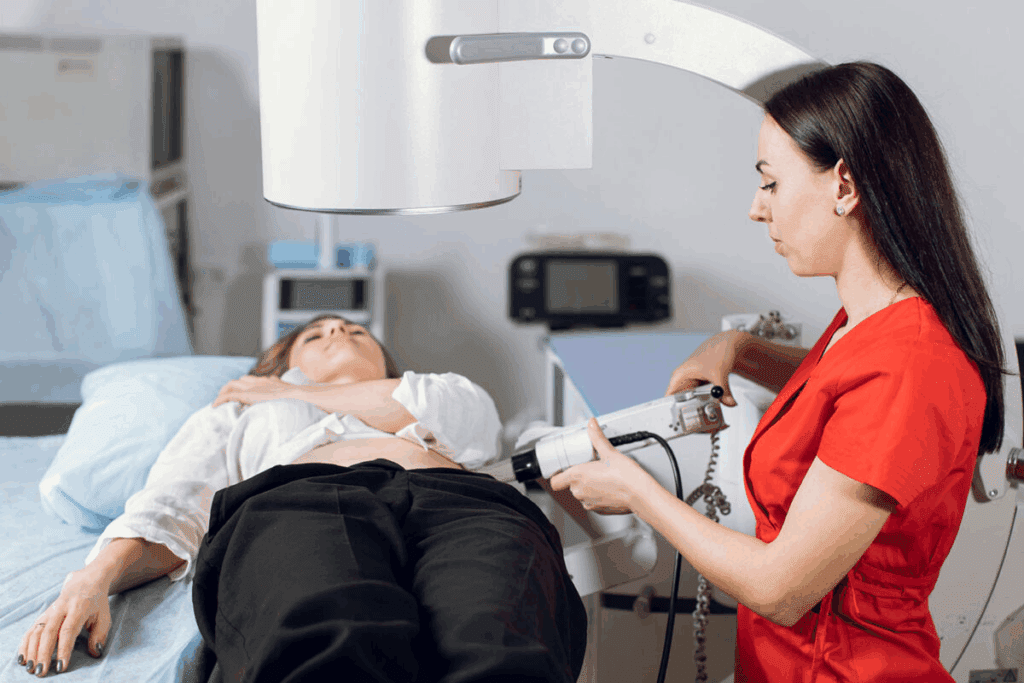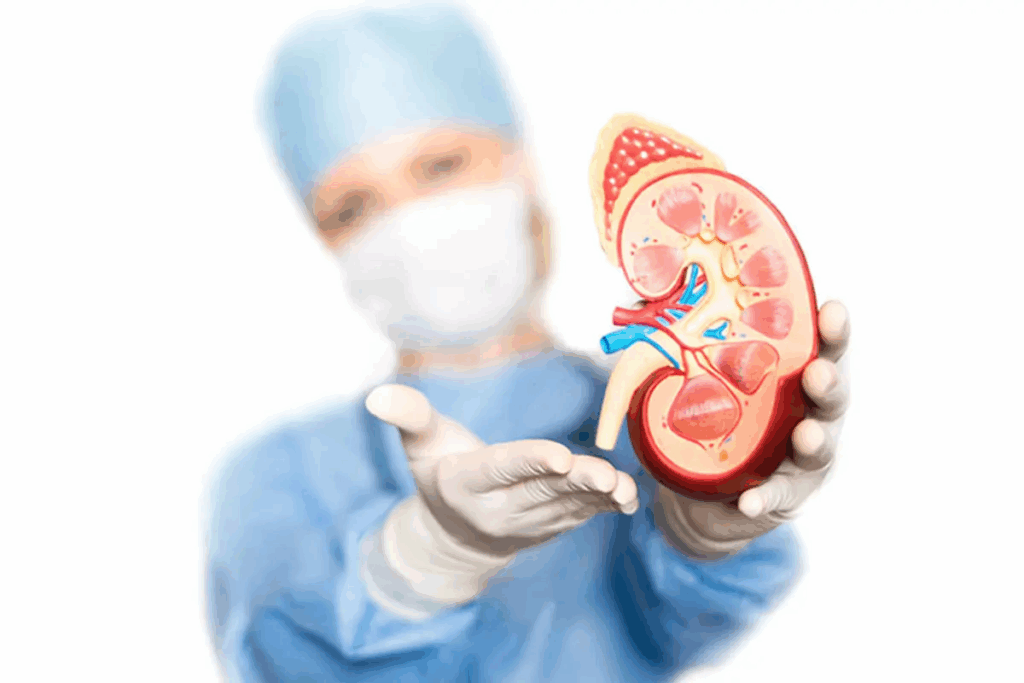Last Updated on October 31, 2025 by Bilal Hasdemir

Medical terms can sometimes be hard to understand. Calculi is one such term. It comes from Latin, meaning “pebble.” It’s the plural form of calculus, a key term in medicine. It refers to stone-like formations in the body what does calculi mean.
These formations can happen in different parts of the body. For example, kidney stones, or renal calculi, affect about 1 in 20 people. Knowing what calculi means is important for those dealing with health issues.
Key Takeaways
What Does Calculi Mean in Medical Context

The term “calculi” is key in medical talk. It means stone-like things in the body. Knowing about “calculi” helps doctors find and treat stone-related problems.
Etymology and Latin Origin of the Term
The word “calculi” comes from Latin. It means “pebble” or “stone.” This helps us understand its use in medicine. It shows how medical words have changed over time.
Calculus vs. Calculi: Understanding the Terminology
It’s important to know the difference between “calculus” and “calculi.” “Calculus” means one stone, while “calculi” means more than one. This helps doctors plan the right treatment.
Historical Context in Medical Literature
Doctors have talked about “calculi” for centuries. It shows how important it is in understanding diseases. In the U.S., about 1 to 2% of adults get kidney stones each year. This makes it a big deal in today’s medicine.
The Biological Formation Process of Calculi

Calculi formation happens when the body can’t dissolve minerals in urine properly. This is a complex process. It involves the buildup and hardening of mineral crystals over time. Lithiasis is a multifactorial condition, influenced by both physiological and environmental factors.
Lithiasis: The Crystallization Process Explained
The crystallization process in lithiasis starts when minerals in urine become too concentrated. Crystals then form and aggregate, eventually growing into stones. This process can be influenced by factors such as urine pH, concentration, and the presence of inhibitors or promoters of crystallization.
Medical professionals say, “The urine’s ability to hold minerals in solution is key. When this balance is disrupted, the risk of calculi formation goes up.”
Physiological and Environmental Risk Factors
Several factors contribute to calculi formation. These include dietary factors, like high oxalate, sodium, or animal protein intake, and hydration levels. Being dehydrated or having conditions that affect urine concentration increases risk. Genetic predispositions and certain medical conditions also play a role.
Knowing these risk factors helps us prevent calculi formation. It also helps reduce the risk of complications.
Composition and Classification of Different Calculi Types
Calculi, or stones, come in different types. Each type has its own makeup and treatment needs. They can be made of various materials, each with its own set of characteristics and implications for health.
Calcium Oxalate and Calcium Phosphate Calculi
Most kidney stones are calcium stones. They are usually made of calcium oxalate. These stones form when there’s too much calcium or oxalate in the urine. Calcium phosphate stones are less common but can happen in people with certain metabolic conditions.
Uric Acid and Struvite Calculi
Uric acid stones are often linked to gout. This is because there’s too much uric acid in the urine. Struvite stones, on the other hand, are usually caused by urinary tract infections (UTIs). They can grow fast and become quite large.
Cystine and Rare Calculi Types
Cystine stones are rare and happen in people with cystinuria. This is a genetic disorder that makes cystine leak through the kidneys. Other rare types include stones made of medication remnants or other substances.
Mixed Composition Calculi
Many stones are a mix of different materials. Knowing what they’re made of is key to finding the right treatment.
By classifying stones based on their makeup, we can understand their causes and how to treat them. This detailed knowledge is vital for managing and preventing stones effectively.
Anatomical Locations Where Calculi Commonly Form
Different types of calculi form in various parts of the body. These stones can appear in the kidneys, gallbladder, and urinary tract. We will look at these areas to understand the symptoms and treatments for each.
Renal Calculi (Kidney Stones)
Renal calculi, or kidney stones, form in the kidneys. They can be made of calcium oxalate, uric acid, or struvite. These stones can cause severe pain and may lead to serious problems if not treated quickly.
Biliary Calculi (Gallstones)
Biliary calculi, or gallstones, form in the gallbladder. They can be painless or cause a lot of pain, known as biliary colic. Gallstones can also lead to cholecystitis or pancreatitis.
Urinary Tract Calculi
Urinary tract calculi are stones in the urinary system, not the kidneys. They can be in the ureters, bladder, or urethra. Symptoms include pain, trouble urinating, or frequent infections. Treatment depends on the stone’s size, location, and type.
Salivary and Pancreatic Calculi
Calculi can also form in the salivary glands and pancreas. Stones in the salivary glands cause pain and swelling, often during meals. Pancreatic stones are linked to chronic pancreatitis. Both can cause a lot of discomfort and problems if not managed well.
In conclusion, calculi can form in many parts of the body. Each location has its own symptoms and complications. Knowing these is key to diagnosing and treating them effectively.
Kidney Stones: The Most Prevalent Form of Calculi
Kidney stones, or renal calculi, are a big health issue. They often come back and can cause a lot of pain. About 1 in 20 people will get a kidney stone at some point in their lives. This makes it important to know how to prevent them.
Epidemiology and Demographic Patterns
Kidney stones affect people differently. Men get them more often than women. The risk is highest between 30 and 50 years old. Things like diet, how much you drink, and your genes also matter.
Classification of Kidney Stone Types
Kidney stones come in different types. The most common are calcium oxalate, uric acid, struvite, and cystine stones. Calcium oxalate stones are the most common. They are linked to diet and metabolic issues. Knowing what kind of stone you have helps doctors figure out how to treat you.
Geographic Distribution and the “Stone Belt”
Kidney stones are more common in some places than others. The idea of a “stone belt” shows where kidney stones are really common. This is often because of the local climate, diet, and how much water people drink.
“The southeastern United States is often referred to as a ‘stone belt’ due to its high incidence of kidney stones.”
This shows how important it is to look at the environment and lifestyle when it comes to kidney stones.
Clinical Manifestations and Symptoms of Calculi
Calculi, or stones, show different symptoms in people. This depends on the stone’s type and where it is in the body. The symptoms can change based on the stone’s size and location.
Pain Characteristics and Patterns
Pain is a common symptom of calculi. It is often severe and comes in waves. For kidney stones, the pain moves from the flank to the groin. Gallstones cause pain in the upper right area.
Severe pain episodes, known as renal colic, are characteristic of kidney stones. This pain is often accompanied by nausea and vomiting.
Location-Specific Symptoms and Signs
Symptoms of calculi depend on their location. Kidney stones cause flank pain and blood in the urine. Gallstones lead to pain in the right upper quadrant, worse after eating fatty foods. Urinary tract stones cause problems like painful urination and urgency.
Silent Calculi and Incidental Findings
Some calculi don’t show symptoms and are found by accident during tests. These “silent stones” might not need treatment right away. But, they need to be watched to avoid future problems.
| Location | Common Symptoms |
| Kidney | Severe flank pain, hematuria, nausea |
| Gallbladder | Right upper quadrant pain, jaundice |
| Urinary Tract | Dysuria, urinary urgency, obstruction |
Diagnostic Approaches and Imaging Techniques
Getting a correct diagnosis is key to managing calculi well. We use many tools to find and understand these stones. This helps us choose the right treatment.
Radiological Investigations
CT scans are top-notch for spotting kidney stones. They are the best way to find renal calculi. Ultrasound is great for finding gallstones and checking for problems. X-rays can see some stones but miss smaller or less dense ones.
Laboratory Assessments and Urinalysis
Lab tests, like urinalysis, give us clues about the stones and possible health issues. They can show signs of infection or other problems. This helps us decide how to treat you.
Stone Analysis and Metabolic Evaluation
Knowing what a stone is made of helps us treat and prevent future stones. We check things like urine pH and levels of calcium and uric acid. This helps us find and fix any health issues that might cause stones.
Treatment Modalities for Various Calculi Types
The treatment for calculi depends on several factors. These include the type, size, and where the stones are located. We create treatment plans that meet each patient’s unique needs. This ensures their condition is managed effectively.
Conservative Management and Medical Dissolution
For some types of calculi, a conservative approach is best. This might involve medical dissolution techniques. Here, medications help break down the stones. Patients are also given advice on diet and staying hydrated to manage their condition.
Surgical Interventions and Indications
When conservative methods don’t work, surgical interventions might be needed. Surgery is usually considered for bigger stones or those causing a lot of symptoms. The choice to have surgery depends on the patient’s health and the stone’s characteristics.
Minimally Invasive Procedures
Minimally invasive procedures have changed how we treat calculi. They offer effective solutions with less recovery time. Methods like Extracorporeal Shock Wave Lithotripsy (ESWL), Ureteroscopy, and Percutaneous Nephrolithotomy (PCNL) are used, mainly for kidney stones. These procedures aim to reduce pain and help the body heal faster.
Potential Complications of Untreated Calculi
Not treating calculi can lead to serious problems. These problems can affect your health and how well you live. Stones can form in the kidneys, gallbladder, and urinary tract. If not treated, they can cause big health issues.
Acute Complications: Obstruction and Infection
Untreated stones can block the urinary or biliary tract. This can cause a lot of pain, nausea, and vomiting. For example, kidney stones can block the ureter. This can lead to a urinary tract infection (UTI) or even sepsis if bacteria are present. Prompt medical attention is key to avoid these problems.
Chronic Complications: Organ Damage and Dysfunction
Long-term blockage by stones can harm the organ. For instance, untreated kidney stones can damage the kidneys. They can also make kidney disease worse. Gallstones can cause long-term inflammation of the gallbladder.
Psychological Impact and Quality of Life Considerations
Having stones and their complications can really affect your mind. It can make your life quality worse. Chronic pain, infections, and fear of more problems can cause anxiety and depression. It’s important to treat these mental health issues too to help patients get better.
We stress the need for quick diagnosis and treatment. This can prevent serious problems and improve life quality for those with stones.
Prevention Strategies and Lifestyle Modifications
To prevent calculi, we need to change our lifestyle and use medical treatments. Knowing the risks and using the right prevention methods can lower the chance of getting calculi.
Dietary Approaches for Different Calculi Types
Changing what we eat is key in stopping calculi from forming. For calcium oxalate stones, eating less oxalate-rich foods and keeping a balanced calcium intake is important. If you’re at risk for uric acid stones, eating less purine can help.
Hydration Recommendations and Fluid Management
Drinking enough water is vital in stopping calculi, like kidney stones. Drinking at least 2 liters of water a day helps dilute minerals that can form stones. People at risk should drink more water.
Pharmacological Prophylaxis and Monitoring
Sometimes, medicine is needed to stop calculi from coming back. This can include drugs that change urine pH or lower the amount of substances that form stones. It’s important to keep up with doctor visits to adjust these treatments.
| Prevention Strategy | Description | Benefit |
| Dietary Modifications | Limiting oxalate and purine intake | Reduces risk of specific stone types |
| Adequate Hydration | Drinking at least 2 liters of water per day | Dilutes minerals that form stones |
| Pharmacological Prophylaxis | Medications to alter urine pH or reduce stone-forming substances | Prevents recurrence in high-risk individuals |
Special Populations and Calculi Management
Managing calculi in special groups needs a deep understanding of their unique needs. This includes kids, pregnant women, older adults, and those with genetic conditions. Each group faces different challenges in dealing with calculi.
Pediatric Calculi: Unique Considerations
Kids with calculi often have underlying issues. Early diagnosis and treatment are key to avoid kidney damage. We must think about the child’s age, size, and development when choosing treatments.
Calculi During Pregnancy
Pregnancy ups the risk of kidney stones due to body changes. Conservative management is usually the first choice, focusing on staying hydrated and managing pain. Sometimes, surgery is needed.
Geriatric Patients and Comorbidity Factors
Older adults often have other health issues, like kidney or heart problems. These can make managing kidney stones harder. We must carefully pick the right treatment for them.
Genetic Predispositions and Hereditary Conditions
Some genetic conditions, like cystinuria or primary hyperoxaluria, raise the risk of kidney stones. Genetic testing and counseling help spot those at risk. They guide how to manage their condition.
Conclusion: The Importance of Understanding Calculi in Modern Medicine
Understanding calculi is key to effective care in today’s medicine. New medical tech and treatments have made managing calculi much better. This lets doctors give treatments that really work.
Knowing about calculi helps doctors figure out what’s wrong and how to fix it. They can make plans that fit each patient’s needs. This is because they know about the different kinds of calculi and how they form.
Today, treating calculi is more advanced than ever. Doctors have many ways to help, from simple treatments to surgery. As research keeps getting better, we’ll see even more progress in treating calculi. This will lead to better health and happiness for patients.
Healthcare pros need to keep learning about calculi to give the best care. This shows how vital it is to understand calculi in today’s medicine.
Calculi are stone-like formations found in the body. They can be in the kidneys, gallbladder, or urinary tract.
The word “calculi” comes from the Latin “calculus,” meaning pebble.
“Calculus” means one stone. “Calculi” means more than one stone.
Lithiasis is the process of forming stones. It happens when mineral crystals build up and solidify.
There are several types of calculi. These include calcium oxalate, uric acid, struvite, and cystine stones. Each type has its own characteristics and effects on the body.
Stones can form in many places. This includes the kidneys, gallbladder, and urinary tract. Each location can cause different symptoms.
Symptoms vary based on the stone’s location and size. Common signs include pain, blockage, and infection.
Doctors use imaging and lab tests to find stones. They also analyze the stones themselves.
Treatment options include watching and waiting, surgery, and less invasive methods. These include ESWL, ureteroscopy, and PCNL.
National Health Service (NHS). What Does Calculi Mean A Complete Medical Definition. Retrieved from https://www.nhs.uk/conditions/kidney-stones/symptoms/
Subscribe to our e-newsletter to stay informed about the latest innovations in the world of health and exclusive offers!
WhatsApp us